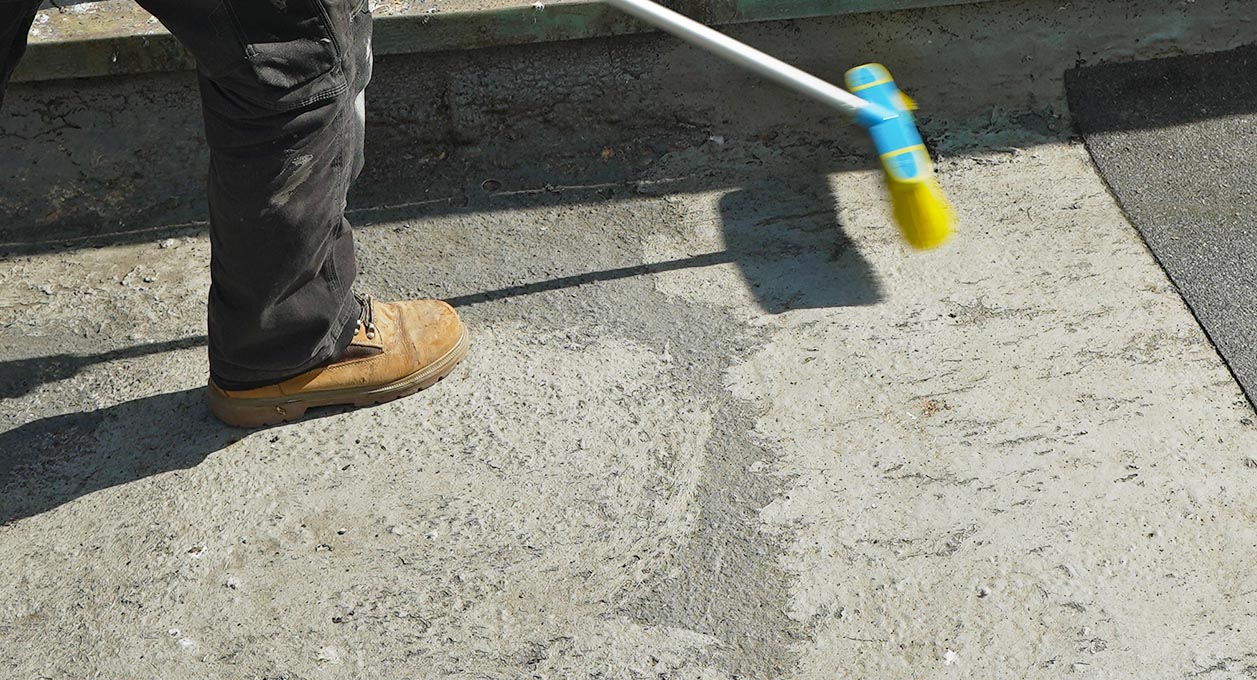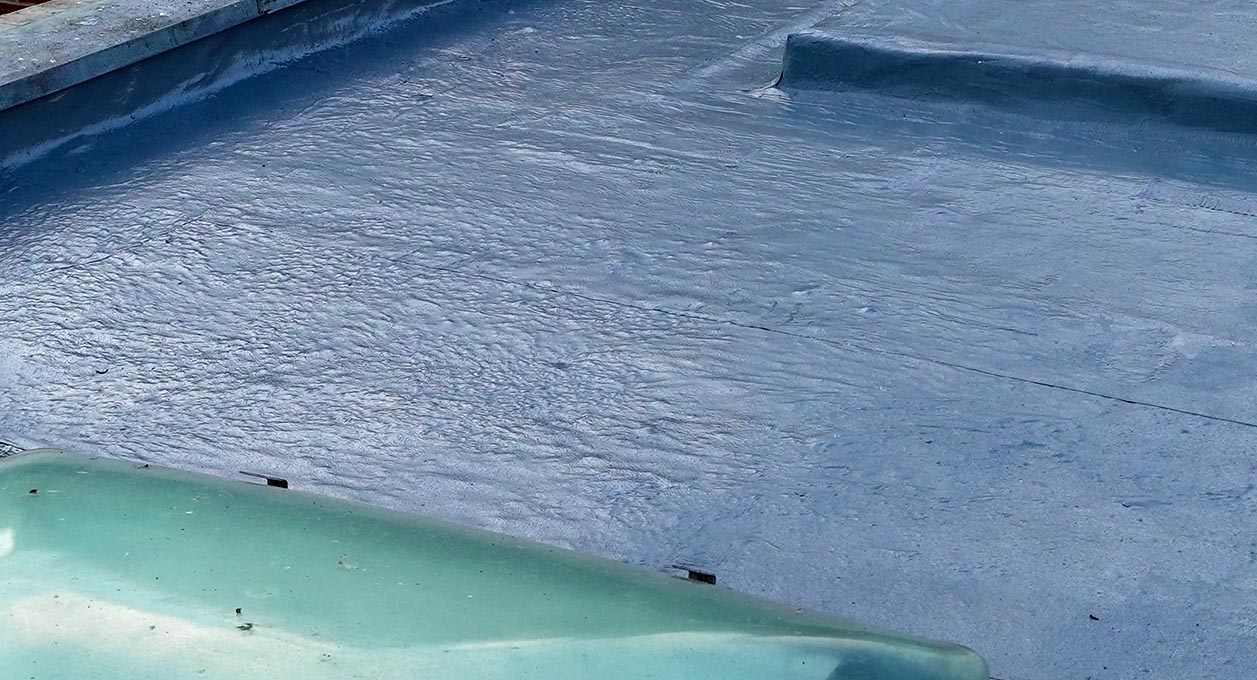Flat roofs are popular among many homeowners in the UK because they are:
- Reasonably priced
- Inconspicuous
- Easy to maintain compared to traditional roofs
Despite the popularity of flat roofs, you may encounter some difficulties when you come to insure it. As these roofs are often made from felt, asphalt or other similar materials, insurers may have doubts about their durability compared to tiled, slate or EPDM roofs.
In reality, however, if you maintain your flat roof regularly, it can protect your property for around 50 years as long as they are properly installed.
Moreover, regular checks and maintenance will help you avoid:
- Excessive wear and tear
- Major damage
The best time to carry out a check is during the spring and autumn months, or after a heavy storm or snowfall.
Many flat roofs are covered in felt, making them vulnerable to:
- Blistering
- Ponding
- Splitting
If your flat roof is showing any early signs of damage, you will need to arrange repairs as soon as possible. So, how can your leaking flat roof be repaired?
Here is some guidance on the variety of problems that can occur.
1. Splitting
Splitting is a typical flat roof problem that occurs once cracks or tears appear on the felt or asphalt cover. When this happens, water may leak through the gaps, resulting in damage to your property due to dampness.
There are several reasons why splits can occur, including:
- Exposure to the elements
- Walking (or other stresses) on the roof
- Poor workmanship
How can you determine whether your flat roof has splits?
You should check for signs of staining or dampness in the following areas:
- On the ceiling
- At the top of the inside walls
- Underneath the roof
How can you fix splitting?
- Examine the split and measure the size you need to cover
- Clean and clear the area before carrying out the repair
- Fill in the spaces under the split using bitumen adhesives or roofing cement
2. Ponding
Despite being called a ‘flat’ roof, certain sections may have slight slopes where water can collect when it rains. This is called ponding and it could indicate that you have a problem with your roof’s drainage system. If the indents are not repaired, the water may seep into your home.
As soon as you notice signs of ponding, you should clean the drains and guttering. Remove any leaves or other debris blocking the water’s path. If the ponding is not clearing, you may need to install:
- Additional gutters
- Automatic pumps
You can also build up or re-lay the slope to prevent the water from collecting in the problem areas.
Don’t worry though, by regularly maintaining your flat roof, you will be able to spot the first signs of ponding. It is also easier to repair the damage if it is still only minor.
3. Blistering
While ponding and splitting are caused by water, blisters are due to excessive heat. So, how does blistering occur? During the summer months, air becomes trapped between the felt and the felt substrate. Heat will then cause the air pocket to expand and contract. This continuous process can cause the material to burst or rupture. As a result, before long, rainwater or snow will be able to seep inside your home.
How to fix the blisters:
If the blisters are small, you can cut around the area until it is flat. Take care not to damage the layer under and around the blisters. Then:
- Make sure the blister area is dry. If the site is still damp, you can use a heat gun. However, be careful not to overheat the surface to prevent the felt area from melting away.
- Once the material has dried, fold back the loose, sliced felt material. Apply the bitumen adhesive on the exposed area. Press the previously cut segment on top of the adhesive and stick it down.
- Apply a new piece of felt to cover the damage and put some adhesive on top. Use pressure to seal the edges and sides for waterproofing.
How to maintain your flat roof
You can extend the lifespan of your flat roof by carrying out maintenance work every five years. It also pays to check the roof twice a year, preferably during the spring and autumn months. This will help ensure that your flat roof does not suffer any damage during the hot summer or the cold winter. Here are some proactive steps you can take during your maintenance checks.
- Clean the flat roof – You can remove the leaves, debris and dirt with tools. If you prefer, you can hire a professional to do this for you.
- Avoid standing on your flat roof – Standing on a flat roof may cause damage as they are not designed to hold a person’s weight. If you cannot reach a particular area, you may need professional help.
- Clean the drains and the surroundings – Poorly maintained drains are often the cause of pooling and ponding. Therefore, it is essential that you clear the drains of any blockages. In addition, if you have surrounding foliage, this may result in leaves, twigs and even branches being deposited on your roof. To prevent this, make sure you cut the nearby tree limbs, leaving a one-metre clearance.
After a heavy storm or a bout of inclement weather, check your roof and ceilings for any signs of damage. Also, during the winter, try to remove thick layers of snow before it can cause any damage to your home.
Conclusion
“If you maintain your flat roof regularly, it can protect your property for around 50 years.”
The primary reason for the popularity of flat roofs is their affordability and easy maintenance. Although insurers are sometimes wary of providing protection against damage, flat roofs can actually last a long time. Nevertheless, it is imperative that the felt or asphalt material is installed correctly and properly maintained. The most common problems that can occur with flat roofs are splitting, bonding and blistering. Fortunately, regular checks and effort to maintain your flat roof, will enable minor repairs before any significant damage can be caused to your home.





